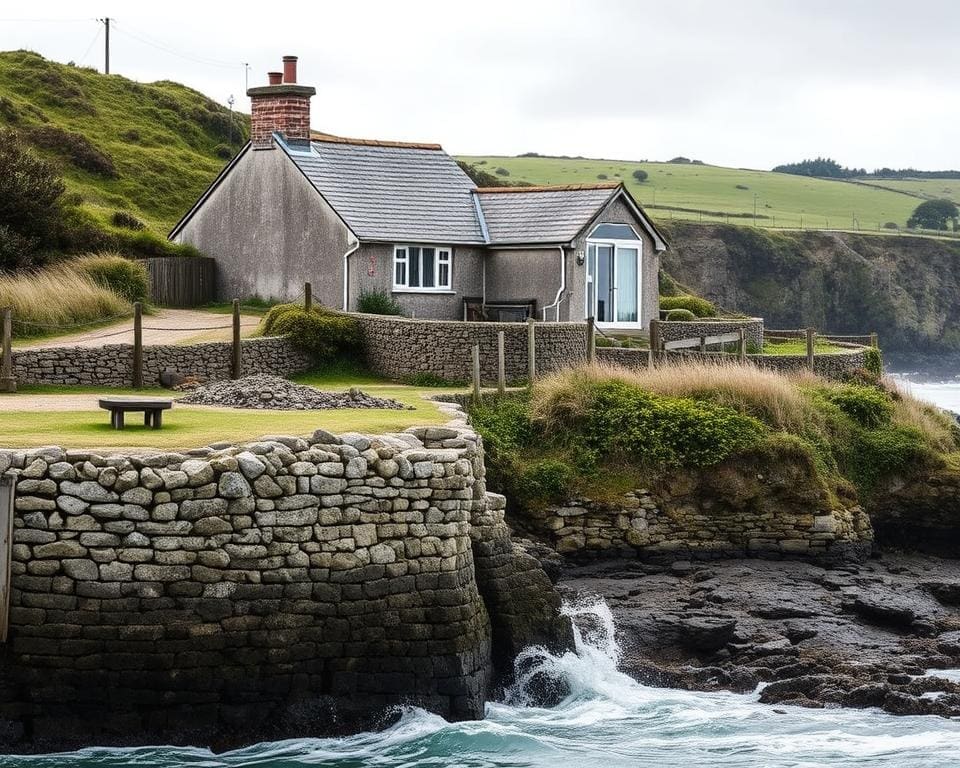Adapting a coastal cottage in Cornwall to climate challenges is crucial for homeowners looking to safeguard their properties against the ever-shifting environmental landscape. With its picturesque settings, Cornwall faces unique adversities such as rising sea levels and increased storm intensity. Understanding how to adapt a coastal cottage in Cornwall to climate not only preserves its charm but also enhances its resilience. This article delves into effective strategies for Cornwall coastal cottage adaptation, from identifying specific climate risks to implementing eco-friendly practices that foster long-term sustainability.
Understanding the Climate Challenges for Cornwall Coastal Cottages
Cornwall’s coastal cottages are nestled in a breathtaking landscape, yet this beauty comes with significant challenges. Increased storm activity poses a direct threat, leading to heightened risks of flooding that can damage properties and disrupt lives. Erosion, another pressing concern, is exacerbated by rising sea levels, which steadily encroach upon the land. The unique geographical position of Cornwall means that these quaint homes are particularly vulnerable to the repercussions of climate change.
Awareness of these issues is crucial for homeowners and communities alike. Research from Cornwall Council has shed light on the urgent need for both understanding and action regarding these escalating threats. The journey toward Cornwall coastal property climate resilience begins with recognising the potential impact of climate factors on these cherished cottages.
Effective climate adaptation for Cornwall cottage involves not just awareness but proactive measures that include monitoring local environmental changes and supporting policies designed to protect coastal properties. Engaging with local organisations and experts can help residents create strategies tailored to their specific circumstances, fostering a spirit of resilience in the face of uncertainty.

How do you adapt a coastal cottage in Cornwall to climate?
Adapting a coastal cottage in Cornwall is essential for ensuring its longevity in the face of climate challenges. Understanding the specific climate risks and the impacts of sea level rise enables homeowners to implement effective climate change measures that safeguard their properties.
Identifying Specific Climate Risks
The risks posed by climate change to Cornwall seaside properties can vary widely. Homeowners should evaluate factors such as proximity to the shoreline and historical weather patterns. Reviewing local climate projections provides insight into potential future scenarios. Awareness of these risks shapes the development of Cornwall seaside property climate change measures, facilitating well-informed decisions that enhance resilience.
Impact of Sea Level Rise on Coastal Properties
Sea level rise represents a growing threat to coastal properties throughout Cornwall. With projections indicating that some areas could experience increased flooding by 2050, homeowners must take this into account. Elevating properties and redesigning drainage systems form part of effective Coastal Cornwall house climate adaptation strategies. Such measures not only protect homes but also promote sustainability within the community.
Strategies for Cornwall Coastal Property Climate Resilience
Enhancing the climate resilience of properties along the stunning Cornwall coastline requires a blend of thoughtful landscape design and robust construction techniques. Implementing effective solutions for Cornwall coastal chalet weatherproofing ensures that homes remain safe and comfortable, regardless of the unpredictable weather conditions often faced in this scenic region.
Landscape and Drainage Solutions
Addressing landscape challenges is key to preventing water damage. Consider these strategies:
- Create buffer zones with native plants to absorb excess rainfall.
- Utilise permeable paving for driveways and pathways to improve water drainage.
- Enhance natural vegetation to stabilise soil and combat erosion.
These measures contribute significantly to the overall effectiveness of Cornwall seaside cottage climate-proofing, reducing flood risks and ensuring that properties can withstand heavy rainfall.
Materials and Construction Techniques for Weatherproofing
Incorporating high-quality materials and innovative construction practices is essential for long-term durability. Options include:
- Using moisture-resistant building materials that can withstand harsh coastal environments.
- Applying advanced sealing technologies to protect against water ingress.
- Investing in energy-efficient windows and doors to minimise heat loss.
These elements play a pivotal role in Cornwall coastal chalet weatherproofing, providing homeowners with peace of mind in the face of climate challenges.
Effective Climate-Proofing Measures for Cornwall Seaside Cottages
Addressing climate challenges requires a thoughtful approach to Cornwall seaside cottage climate-proofing. Effective climate-proofing measures not only enhance energy efficiency but also safeguard properties against the unique environmental pressures of coastal living. Implementing these strategies can significantly impact the longevity and sustainability of your coastal retreat.
Choosing the Right Insulation
Insulation plays a vital role in maintaining a comfortable indoor environment. Selecting the right type, particularly from recycled or eco-friendly materials, promotes sustainability while providing optimal thermal performance. By enhancing the insulation of a coastal cottage, residents can effectively regulate temperature, thus reducing energy expenditure while contributing to eco-friendly practices. This approach answers the question, How do you adapt a coastal cottage in Cornwall to climate?
Sealants and Protective Coatings
The use of high-performance sealants and protective coatings is essential for safeguarding against moisture intrusion. These solutions fortify the building envelope, ensuring that the structure withstands harsh weather conditions typical of the region. Implementing these protective measures not only reinforces energy efficiency but also prolongs the lifespan of the property. Through diligent application of advanced materials, Cornwall seaside cottage climate-proofing can be achieved effectively.
Incorporating Sustainable Practices in Coastal Cottage Adaptation
Integrating sustainable practices plays a crucial role in adapting coastal cottages to the challenges of climate change. Focusing on renewable energy solutions and water conservation strategies not only enhances the resilience of the property but also contributes positively to the surrounding environment and community.
Renewable Energy Solutions for Coastal Living
Coastal Cornwall house climate adaptation can greatly benefit from the implementation of renewable energy systems. Solar panels and wave energy devices harness natural resources and reduce reliance on fossil fuels. These installations facilitate greater energy independence while diminishing the carbon footprint. Many homeowners are finding that investing in renewable energy leads to significant long-term savings on energy bills, making these practices not only sustainable but economically viable.
Water Conservation Strategies
Water scarcity can pose a serious threat, particularly in coastal areas. Implementing water conservation strategies is fundamental in the realm of sustainable practices in Cornwall cottage adaptation. Options such as rainwater harvesting systems and efficient plumbing fixtures greatly optimise water usage. By capturing and utilising rainwater, homeowners can significantly decrease their reliance on treated water, fostering a more sustainable approach to living by protecting this precious resource for future generations.
Community and Planning Considerations for Coastal Adaptation
As the climate challenges facing Cornwall become increasingly apparent, community and planning considerations emerge as vital components in the journey towards Cornwall coastal property climate resilience. Local councils and planning bodies have a unique opportunity to embed climate resilience into their long-term development frameworks. By prioritising these efforts, they can help ensure that homes along the coastline not only withstand the elements but thrive despite them.
Engagement with community stakeholders plays a pivotal role in formulating effective strategies for adaptation. Through collaborative efforts, residents can share insights and work together to identify solutions that serve the wider neighbourhood. This collective approach not only enhances individual properties through Cornwall coastal chalet weatherproofing but also contributes to the overall resilience of the community. The sharing of resources and expertise fosters a robust support network, essential for tackling the impact of climate change.
Moreover, local initiatives that focus on education and community involvement create a culture of preparedness and adaptability. Workshops, information sessions, and community projects can encourage residents to take proactive steps in enhancing their own homes while helping to build a resilient coastal environment. By championing these community-led enterprises, Cornwall can pave the way for sustainable living that not only protects its cherished coastline but also nourishes the spirit of its communities.









